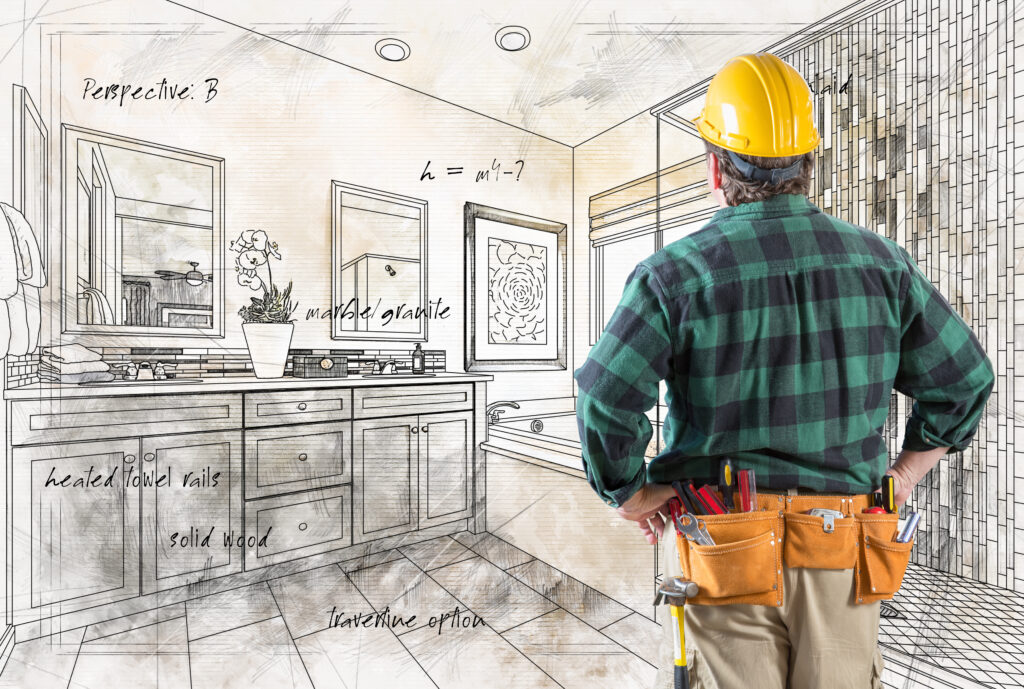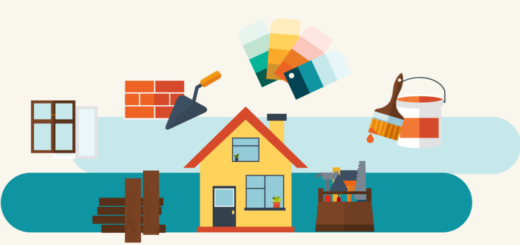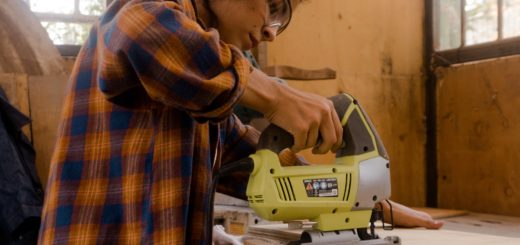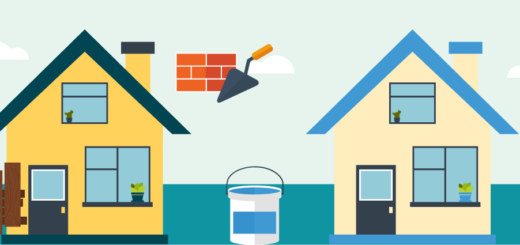Home improvement loans: What they are and how they work

If you’re a homeowner, home improvements will eventually wind up on your to-do list, helping you refresh your property or improve its function for your family. But whether you’re creating the home of your dreams or simply bringing it into the 21st century, home improvements don’t come cheap.
A minor kitchen remodel can easily run $24,000 on average, according to Home Depot. And if you’re looking to completely revamp your master bathroom, plan on paying $30,000 or more.
While price tags like that might have you thinking twice, the right home improvement loan can help foot the bill. Here’s a look at some of your best options for funding new projects.
What is a home improvement loan and how does it work?
A home improvement loan is a personal loan that you use to fund a home improvement project, from a minor repair to a massive renovation that’ll increase your home’s value. You’ll borrow a lump sum of money upfront and repay the loan in fixed installments over a set period of time.
You might use a home improvement loan to pay for things like:
- A full bathroom remodel
- New flooring
- A new roof
- Updating your kitchen
- Building a new deck
- Taking on a big landscaping project
- Replacing old electrical or plumbing systems
- Installing a new HVAC
Why use a personal loan to renovate your home?
A personal loan can be a good option when it comes to funding your upcoming home improvement projects. The best personal loans have a quick and simple application and approval process.
If you need cash fast for an unexpected repair — such as an HVAC system that goes out in the middle of summer or a roof that needs replacing before the rainy season — a personal loan can put cash in your hand as quickly as the same or next business day.
Personal loans are unsecured, meaning that you don’t have to use your property as collateral for the loan. For this reason, personal loans often have higher interest rates than some other loan products, but they can also be easier to obtain.
Personal loans are best suited for borrowers without much home equity, those who don’t want to put their home on the line as collateral, or homeowners who need cash quickly.
How do you qualify for a home improvement loan?
The requirements to qualify for a home improvement loan can vary from one lender to the next. But most personal loan lenders expect these general qualifications:
- You’ll need strong credit. Most personal loan lenders require a good to excellent credit score in order to qualify. If you don’t have good credit, you may need to apply with a cosigner who has good credit to help you get approved.
- You’ll need proof of income. Personal loan lenders want to ensure that you’re able to repay your new loan, so they’ll ask to see proof of income. This might be in the form of recent pay stubs, your W-2, or even last year’s tax returns.
- Your household debt can’t be too high. Your debt-to-income (DTI) ratio is how much of your monthly income goes toward debt payments. If your DTI ratio is too high, you may have trouble getting approved for a new home improvement loan.
Pros and cons of home improvement loans
Like any financial product, home improvement loans have both advantages and disadvantages to consider.
Pros of home improvement loans
- They won’t put your home at risk. Because you generally don’t need to put up any collateral for a home improvement loan, it can be a safer borrowing option than a home equity loan.
- They can help increase your home’s value. You can use home improvement loans for any number of projects, from home repairs and remodels to putting in a new pool. These projects can increase your home’s equity or boost its resale value.
- They can provide quick funding in one lump sum. Home improvement personal loans are installment loans, which means that once you’re approved, you’ll receive one lump-sum payment for the total loan amount. In some cases, you can get funding as quickly as the same day.
Cons of home improvement loans
- They may cost more. Because home improvement loans are generally unsecured, they may have higher interest rates than secured funding options.
- There’s no tax benefit. Some secured home improvement loans, like HELOCs, may allow you to claim a tax deduction on the interest paid. But an unsecured personal loan that you use for home improvements has no such benefit.
- It may be difficult to borrow enough money. Many unsecured home improvement loans have maximum borrowing limits. If you have a low credit score, or you need to borrow more money for a project than what you can get approved for, this type of loan may not be right for you.
Other types of home improvement loans
Home improvement projects may be pricey, but they can add to both your enjoyment of the property and its overall value. Paying for these improvements out of pocket isn’t always feasible though, so consider your needs when shopping around for the right home improvement loan. If getting a personal loan to fund a big home improvement project isn’t right for you, consider these other financing options:
Cash-out refinance
Though the process is a bit more involved than getting a personal loan, cash-out refinancing allows you to pull from your property’s existing equity to fund everything from home improvements to paying off debt, or even purchasing a second property.
A cash-out refi involves replacing your existing mortgage loan with a new, larger loan. This new loan accounts not only for your remaining mortgage balance, but also the amount of your home’s equity that you want to withdraw in cash. Lenders typically won’t allow you to borrow more than 80% of your home’s equity when you do a cash-out refinance.
Cash-out refinances are best for borrowers who don’t need revolving credit, have time to complete the entire refinance process, and have enough equity in their home to offer them access to cash.
Home equity loan
A home equity loan is a type of second mortgage that’s based on your property’s existing equity. These loans may offer a lower interest rate and higher loan limits, since your property is used to secure the debt. The approved loan amount is based on your credit and how much equity you have in your home.
You may have to pay upfront fees or closing costs when you get a home equity loan. And if you aren’t able to make your mortgage payments, the lender can take your home.
Home equity line of credit
Home equity lines of credit, or HELOCs, are similar to a credit card account but are secured by the equity in your home. They provide a revolving line of secured credit that you can tap into at any time, often with a competitive annual percentage rate, or APR.
If you need to use the money for a home improvement project or any other expense, you can borrow up to your credit limit as needed. You’ll make payments on the money you borrow each month, just like a credit card.
These products can be best for homeowners who want a flexible, on-demand loan product and have a fair amount of home equity built up. But just like a home equity loan, you can lose your home if you aren’t able to make your HELOC payments.
How to get the best home improvement loan rates
If you’re looking into a home improvement loan to fund your next big household project, you’ll want to snag the best rate possible. The lower your rate, the less money you’ll pay in interest, the lower your monthly payment will be, and the sooner you’ll get out of debt — or all three!
To snag the best home improvement loan rates, you should:
- Have a strong credit history and score
- Get prequalified through a lender before you apply
- Shop around for various lender offers before choosing one
- Choose a shorter repayment term
- Add a cosigner with good credit to the loan
Home improvement loan FAQs
Here are answers to frequently asked questions about home improvement loans.
How much can you take out for a home improvement loan?
If you’re using a personal loan to take out funds for a home improvement project, you’ll generally only be able to get up to a maximum amounts of up to $100,000, assuming you qualify. If you’re guaranteeing the loan with your home’s collateral — through either a home equity loan or cash-out refinance, for example — your lender may allow you to borrow up to 80% of the appraised value of your home.
For example, if you owe $200,000 on a home that’s worth $400,000, a cash-out refinance could give you access to as much as $160,000 (80% of your home’s appraised value). This would bring your new mortgage loan balance to $360,000.
Can a home improvement loan increase your home’s value?
On its own, a home improvement loan won’t do anything for your home’s value. But how you use those funds can increase your home equity.
Certain types of home improvement projects can increase your home’s value more than others. For example, updating electrical systems or installing a new roof often increases your home’s value more than landscaping or refinishing wood floors.
Is it better to get a personal loan or use home equity when doing renovations?
The answer really comes down to your financial situation, the property, and your overall plans for remodeling and renovating.
A personal loan is unsecured and gives you access to quick funding. But you’ll typically need a healthy credit history and sufficient income in order to qualify.
Since a home equity loan or line of credit is tied to the equity in the property, there may be less stringent credit score requirements. But you’re limited to how much equity you can take out, which may not be as much as you need for the home improvement project. And if you miss a payment, your home could be at risk.
Are home improvement loans tax deductible?
The IRS allows homeowners to deduct the interest paid on a home equity loan from their taxes, for loans up to $750,000. To qualify, you must use the loan funds to purchase, build, or substantially improve a primary or secondary home. You also must itemize your taxes in order to take the home mortgage interest deduction.
Can you get a home improvement loan with bad credit?
It’s possible to get a home improvement loan with bad credit, though it may be more difficult to qualify and you may receive lower loan limits, higher interest rates, or both. This can cost you more over the life of the loan than what someone with good credit would pay.
Loans secured by the property’s equity can be a bit more forgiving. Since the lender takes on less risk with an equity-secured loan, it may accept borrowers with limited credit or a bad credit score.
How do you choose the best lender for a home improvement loan?
The best home improvement loan lender for you depends on what you need. If you’re looking for a personal loan to pay for home improvements, you have many types of lenders to choose from. If you’re looking for an equity-based product, it can be wise to shop around even more.
Whichever type of loan product you decide on, choose the lender that has the lowest fees, lowest rate, and best loan terms for your budget and needs. Make sure the lender can also process your application and disburse your loan funds in a time frame that works for you.
*article originally published by Stephanie Colestock

.gif)


